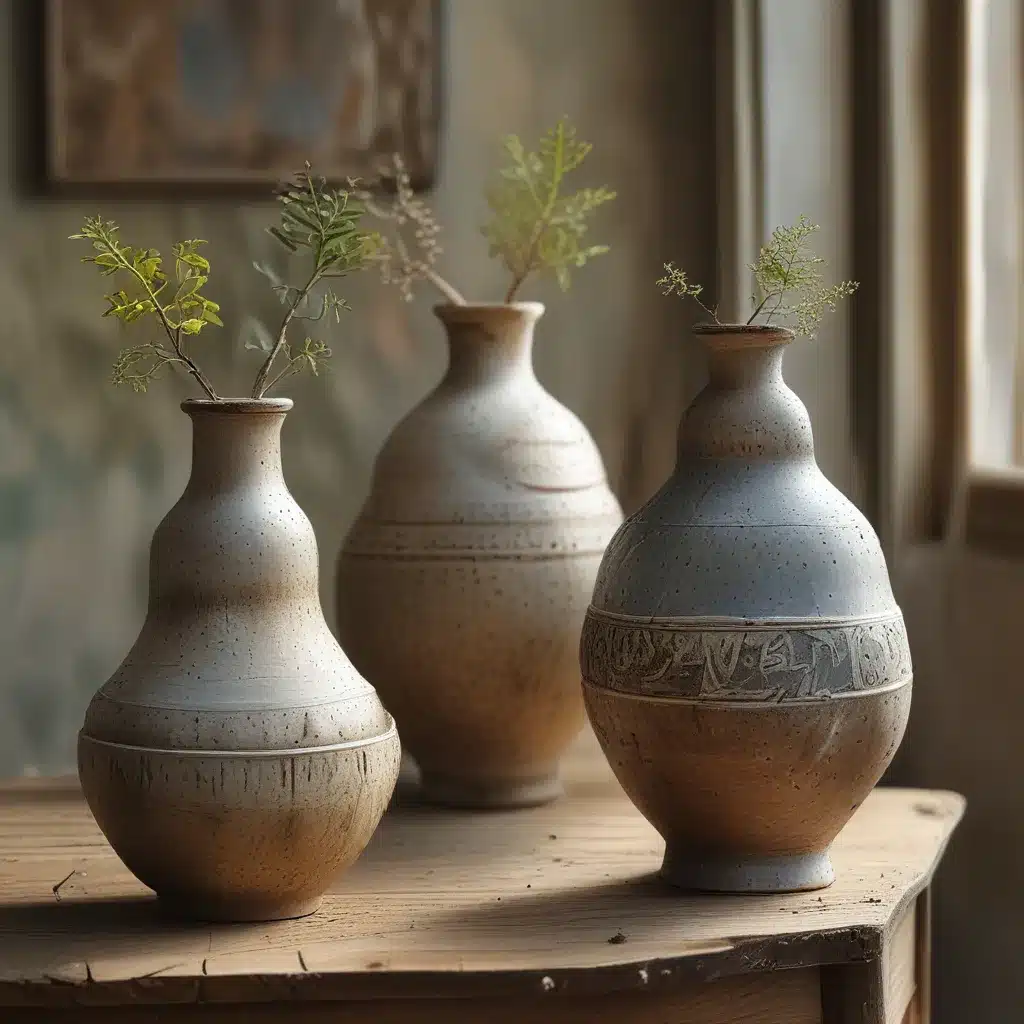
Uncovering the Secrets of Ancient Georgian Winemaking
As I step into the dimly lit cellar of Brooklyn’s Georgian Coffee House, the air is thick with the aroma of aging wine and the whispers of history. My eyes are immediately drawn to the towering, egg-shaped vessels that line the shelves – the legendary kvevri. These ancient clay pots, used for centuries in the wine-making traditions of Georgia, have captured my imagination, and I’m determined to uncover their secrets.
I interlock my fingers with the owner, Nino, and she leads me on a captivating journey through the rich tapestry of Georgian winemaking. Her passion is palpable as she explains the significance of these unique vessels. “The kvevri,” she says, her voice brimming with pride, “are the heart and soul of our winemaking process. They have been passed down through generations, each one a testament to the skill and artistry of our ancestors.”
Tracing the Roots of Kvevri Winemaking
As Nino takes me deeper into the cellar, I can’t help but be struck by the sheer history that surrounds me. These kvevri, some dating back centuries, have borne witness to the ebb and flow of empires, the rise and fall of dynasties. I run my fingers over the intricate patterns and textures, wondering about the stories they could tell.
Nino senses my curiosity and begins to weave a tale of Georgia’s winemaking legacy. “The use of kvevri in Georgia dates back to at least the 6th millennium BC,” she explains, her eyes alight with enthusiasm. “Our ancestors discovered the unique properties of these clay vessels, which allowed them to ferment and age their wines in a way that captured the essence of the land.”
I nod in awe, realizing that I’m standing in the presence of a living tradition that predates even the ancient Greeks and Romans. Nino continues, “The kvevri were buried underground, where the constant temperature and humidity created the perfect environment for the wine to mature. This ancient technique, passed down through the generations, is what gives our wines their distinct character and depth of flavor.”
Reviving the Art of Kvevri Winemaking
As Nino leads me through the cellar, I can’t help but notice the reverence with which she handles each kvevri. She pauses in front of a particularly large vessel, running her hand along its smooth surface. “This one,” she says, her voice hushed, “was made by my great-grandfather. He was a master kvevri-maker, and his work is still prized for its exceptional quality.”
I listen intently as Nino shares the intricate process of crafting these vessels. “The clay must be carefully selected and prepared, the walls must be thick enough to withstand the pressure of the fermenting wine, and the shape must be perfect to ensure the proper circulation of air and liquid.” She explains that the kvevri-makers of old were true artisans, their skills honed over decades of practice.
I can’t help but feel a sense of reverence for the dedication and craftsmanship that goes into each kvevri. Nino smiles, sensing my awe. “It’s a dying art, I’m afraid,” she sighs. “But here at the Georgian Coffee House, we are committed to preserving this tradition. We work with local artisans to ensure that the art of kvevri-making is passed on to the next generation.”
Unlocking the Flavors of Georgian Wine
As Nino leads me deeper into the cellar, the air grows thick with the scent of fermenting grapes. She gestures to the rows of kvevri, each one containing a different varietal of wine. “The beauty of the kvevri system,” she explains, “is that it allows the wine to develop its own unique character. The clay interacts with the wine, imparting subtle flavors and aromas that you simply can’t replicate in a modern winery.”
I close my eyes and take a deep breath, allowing the scents to wash over me. Nino chuckles, “Go on, take a sip. Experience the difference for yourself.” I carefully select a glass of the Saperavi, a bold and intense red wine, and bring it to my lips. The flavors explode on my tongue, a symphony of ripe berries, earthy tannins, and a subtle hint of spice that lingers on the palate.
I look at Nino in awe, my eyes wide with wonder. “This is unlike any wine I’ve ever tasted,” I murmur. She nods, a satisfied smile spreading across her face. “That’s the magic of the kvevri,” she says. “It allows the wine to express the true terroir of our land, the essence of our history and culture.”
Preserving a Centuries-Old Tradition
As Nino and I make our way back to the surface, I can’t help but feel a sense of urgency. The art of kvevri winemaking, so deeply rooted in Georgia’s heritage, is in danger of being lost to the ravages of time. Nino senses my concern and reassures me, “We are not about to let this tradition fade away. Here at the Georgian Coffee House, we are committed to keeping the kvevri alive.”
She explains that the coffee house not only serves as a showcase for these ancient vessels, but also as a hub for education and collaboration. “We work closely with local artisans, hosting workshops and demonstrations to teach the next generation the art of kvevri-making. We also partner with winemakers from around the world, sharing our knowledge and techniques to inspire a new wave of kvevri enthusiasts.”
I nod, my heart swelling with a sense of hope. The kvevri, these humble yet extraordinary vessels, hold the key to unlocking the rich tapestry of Georgia’s winemaking heritage. And thanks to the tireless efforts of people like Nino, this ancient tradition is being breathed back to life, one sip at a time.



















